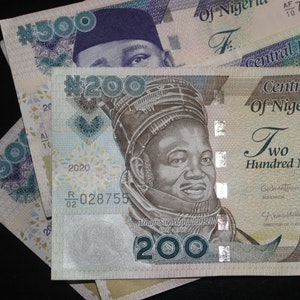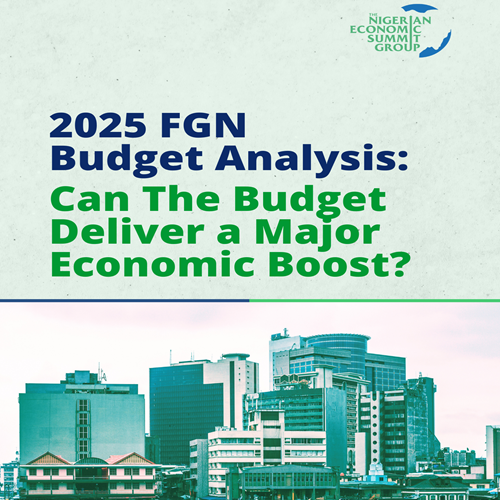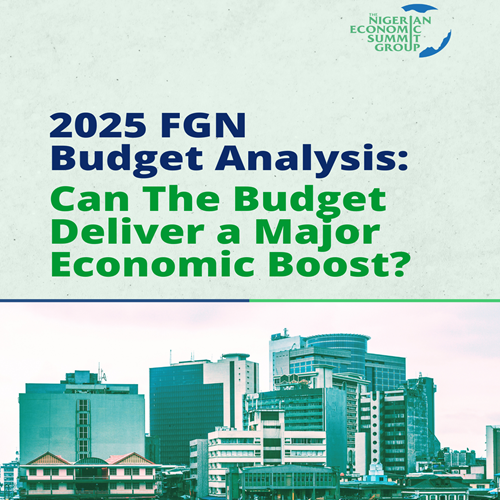Posted Thu, May 27, 2021 11:05 AM
NESG 2021Q1 GDP Report May 2021

Nigerian economy continued on its recovery path, grew by 0.5% in 2020Q1
According to National Bureau of Statistics (NBS), the Nigerian economy expanded by 0.5% in the first quarter of 2021. This is the second positive quarterly growth after Nigeria exited the recession in the fourth quarter of 2020 with a growth of 0.1%. It is, however, a slower growth when compared with the real GDP growth in the corresponding period of 2020 (1.9%). In nominal terms, the size of the economy in the first quarter of 2021 stood at N40 trillion (US$105 billion)[1].
The non-oil sector remains the growth driver, whilst the oil sector is still in recession
The gradual improvement in the overall economic activities was largely driven by the non-oil sector, which accounted for 91% of total real GDP in the first quarter of 2021. The sector grew by 0.8% in the quarter, representing a slow pace of expansion when compared with its performances in the first and last quarters of 2020. This slowdown could be attributed to the contraction of the Services sector, which accounted for 54% of real GDP in 2021Q1. Meanwhile, the key contributors to growth of the non-oil sector in the quarter were the agricultural and industrial sectors, with combined share of 46% in the total real GDP. However, the oil sector – which accounted for 9% of real GDP - remained in contraction territory at –2.2% in 2021Q1. This poor performance could be largely due to a sharp fall in crude oil production to 1.7 million barrels per day in 2021Q1 from 2 million barrels per day in 2020Q1.
The resilience of Agricultural sector was reflected in its persistent growth despite downside risks
In the midst of incessant challenges, particularly the high rate of insecurity in the major food producing regions, the agricultural sector maintained its positive growth trajectory into 2021Q1. The sector expanded by 2.3% in the quarter, representing improved performance relative to 2020Q1 (2.2%). This was driven by the faster pace of growth in fishing and livestock sub-sectors at 3.2% and 1.7%, respectively, compared with their performances in 2020Q1. Meanwhile, the quarter-on-quarter decline in agricultural sector growth could be attributed to a slowdown in crop production. The crop production and forestry subsectors recorded slower growth at 2.3% and 1.3% in 2021Q1.
Inflation continued to surge on slowdown in crop production due to rising insecurity
Inflationary pressures remain elevated in 2021, with headline inflation reaching a four-year high of 18.2% in March 2021. The persistent rise in inflation was largely driven by higher food prices, reflecting a slowdown in crop production – which accounts for about 90% of agricultural output. Accordingly, food inflation spiked to a 16-year high of 23% in March 2021. This is despite the re-opening of the country’s land borders in December 2020. The major upside risk to inflation is insecurity. Core inflation also stood high at 12.7% in March 2021, due to other factors, such as, electricity tariff hike, fuel price increase and continued implementation of VAT increase.
Industrial Sector Growth back in positive region due to a significant rebound in manufacturing activities
The industrial sector unprecedentedly fell into a contraction region in the second quarter of 2020, following the lockdown and other forms of restrictions implemented in Nigeria’s commercial hot-spots – Lagos, Ogun States and the FCT-Abuja. Consequently, the sector maintained negative growth through 2020Q4. The multiplicity of business closures and lockdown restrictions resulted in a surge of unemployment rate to an all-time high of 33.3% as at 2020Q4. The industrial sector, however, witnessed a rebound having posted a growth of 0.9% in 2021Q1, though this is relatively slower than its level in 2020Q1 (2.3%).
The performance of the industrial sector was largely buoyed by a significant improvement in manufacturing activities in 2021Q1 (3.4% growth). The stellar growth of the manufacturing sector was driven by higher production in cement and food & beverage sub-sectors. Both activity sectors – accounting for 58% of the total manufacturing GDP – grew faster by 11.2% and 7.1%, respectively, in 2021Q1 relative to their performances in the same period of 2020. While the construction sector was also supportive of the improvement in industrial activities – expanded by 1.4% in 2021Q1, the mining and quarrying sector constituted a drag on industrial sector growth in the quarter. The mining and quarrying sector contracted by 2.2% in 2021Q1 from a growth of 4.6% in 2020Q1.
Protracted contraction in crude petroleum sector, despite rising oil prices, could widen trade deficits going into the year 2021
In light of improved compliance with the OPEC’s output quota, the Nigerian economy is set for a persistent shortfall in domestic crude oil production. This would limit the gains from rising global oil prices – which averaged US$61 per barrel in 2021Q1 relative to an average oil price of US$52.5 per barrel in 2020Q1. The prospect of lower oil export earnings – which accounts for over 80% of the total export earnings – would further worsen the country’s trade balance position, which is currently in deficit. This is expected to further put more pressure on the external reserves, currently at US$34 billion, and weaken the domestic currency. An eventual return to forex rationing - the CBN's practice in most parts of 2020 - would impair investors’ confidence in the Nigerian economy going forward.
Services sector contracted on poor performance of key activities
The Services sector was the most hard-hit sector by the global pandemic in 2020. Nonetheless, the significant growth recorded by the ICT and finance sectors positively influenced the performance of the overall services sector, particularly, in the fourth quarter of 2020. Nonetheless, the recovery was short-lived, as the Services sector fell again into contraction region at -0.4% in 2021Q1, relative to a growth of 1.6% in 2020Q1. This precarious situation was largely due to a significant slowdown in the ICT sector, as well as, a contraction in transport, accommodation & food services, trade and finance sectors in 2020Q1. While the ICT sector’s growth stood at 6.3%, the four other sectors contracted by 21.9%, 4.6%, 2.4% and 0.5%, respectively, in the quarter. While the education sector has remained in contraction region since 2020Q2, the health sector sustained its growth momentum due to higher household and government spending on the sector in containment of the COVID-19 in Nigeria.
Possible Growth Drivers in Nigeria in 2021
Several estimates pointed at improved recovery of the Nigerian economy in the year 2021, amidst the multiplicity of fiscal and monetary stimulus packages. The International Monetary Fund (IMF), African Development Bank (AfDB) and World Bank expected the economy to expand by 2.5%, 1.5% and 1.1%, respectively, in 2021. Similarly, we at the NESG projected average growth of 2.9% and 0.9% for 2020 under our best and moderate scenarios, respectively. This optimistic economic outlook would therefore depend on key factors including but not limited to:
- Consumer demand;
- Government spending – particularly CAPEX;
- Policy and regulatory consistency;
- Influx of investment into growth enhancing and employment elastic sectors;
- Value chain development – particularly agro-processing;
- Rein in insecurity;
- Embracing digitization across sectors;
- Improvement in transport infrastructure and logistics, and
- Foreign exchange management – which currently targets forex demand over supply.
Concluding Remarks
- While the improved economic recovery is acknowledged, more work needs to be done in accelerating growth and making it more inclusive.
Nigeria has struggled to achieve inclusive growth for many decades. In spite of the positive growth trajectory, the current level of economic growth is rather weak and replicates the trends observed following the exit of the economy from recession in 2017Q2. This suggests that to become strong and resilient, the country needs a high and sustainable economic growth that is accompanied by job creation and poverty reduction. The NESG in its 2021 Macroeconomic Outlook Report pointed out that the Nigerian economy would expand by 2.9% in 2021 under its Best-Case Scenario, as long as, key policy measures are deployed to improve the environment for higher investment inflows. In order to achieve this feat, the Report highlights four priorities that are central to achieving strong economic recovery going into 2021, and they only include: macroeconomic stability, policy and regulatory consistency, sector reforms and human capital development. In the absence of these measures, Nigeria would only realise an average growth of 0.9% in 2021 in line with our projections under the moderate or business-as-usual scenario. More importantly, Nigeria is in dire need of macroeconomic stability to attract the much needed investments – domestic and foreign - into growth enhancing and employment elastic sectors.
- Though relatively resilient, the Agricultural sector faces more downside risks, with knock-on impact on food and overall inflation.
The high level of insecurity – kidnapping, manslaughter, terrorism and social vices - in both the Southern and Northern parts of the country is gradually taking a toll on agricultural sector, as reflected by the slowdown in agricultural production on a quarter-by-quarter basis in 2021Q1. If this precarious insecurity situation is not addressed, both food and headline inflation would remain elevated in coming months.
- The significant improvement in manufacturing sector growth suggests domestic value chain development should be the primacy of government interventions in agro-allied sector.
The outbreak of COVID-19 and its disruption of the global supply chains has shown the increasing need for countries to explore local sourcing of raw materials and intermediate inputs, and this is expected to support and improve domestic value chain development. Exploring backward and forward inter-sectoral linkages, particularly between agricultural and manufacturing sectors in Nigeria would not only expand the country’s industrial base, but would also reduce the intense pressures on the external reserves and the exchange rate. To kick-start agro-processing based industrialisation in Nigeria, there is an urgent need to attract significant investments into the manufacturing sector. In order to achieve this feat, investment-friendly policy and institutional environment would be worthwhile in, particularly, addressing the sector’s age-long structural constraints including: the illiquidity of the foreign exchange market and limited forex access, infrastructural and logistic bottlenecks and policy distortions, among others.
- The sustained growth in the construction sector suggests that much more can still be achieved through an effective and mutually beneficial PPP framework.
While the establishment of the infrastructural company by the Nigerian government is acknowledged, there is need for the country to leverage effective public private partnership (PPP) with the organised private sector and development partners to close the huge infrastructural gap. Creating an environment that is suitable for private sector investment would not only improve the performance of the construction sector, but would also reduce the fiscal burdens on the government.
- The recovery of the Services sector relies mainly on the performance of the ICT and Trade sectors
The key activities in the Services sector - ICT and Trade - remain the growth drivers of the sector going forward. The Trade sector is on the gradual return to a growth path as its depth of contraction has continued to moderate since 2020Q3. Persistent improvement in the sector is expected to complement the contributions of the ICT sector in ensuring that the overall Services sector return to a growth path. However, sub-sectors that are largely disadvantaged by the COVID-19 crisis – Transport, Entertainment, Food, Accommodation and Entertainment, as well as, Tourism - would constitute a drag on the growth performance of the Services sector going forward. This therefore suggests the need to attract more investment inflows into the ICT sector, which currently has a limited capacity to keep up with growing demand for most of its products (voice and data subscriptions) due infrastructure inadequacy. There is also the need to taper regulatory bottlenecks that are considered anti-growth to the telecoms industry, most especially. For the highly fragile sectors that are more prone to the adverse impact of the global pandemic, there is need to extend financial and nonfinancial support to the industry players in order to keep them strong against all odds.
Find a blog post
Latest Releases

2025 FGN Budget Analysis: Can Th .. Read
1 day ago

2025 FGN Budget Analysis: Can Th .. Read
1 day ago

Industrial Policy Commission Gen .. Read
2 weeks from now
